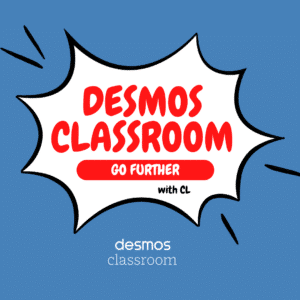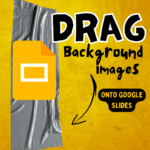Timed math tests cause anxiety. Please stop doing them. Being part of many math groups, since I am a math teacher, it is not uncommon to see teachers talking about the challenge of getting students to learn their math facts. I’m 46 and I was a victim of the well intentioned, but flawed, practice of timed math facts. To this day I will cry thinking about these damaging anxiety producing tests. When you are under stress your brain is in fight or flight mode. Asking students to quickly recall information is not an accurate method of assessing what a student knows.
While timed math tests have been a traditional method of practicing and assessing math facts, there is a growing body of research that suggests alternative strategies may be more effective for students’ long-term understanding and fluency.
But what do you do instead?
THINKING about math is always better than simply memorizing. I tell my students “we do math slowly and thoughtfully.” Solutions we want to provide students give students opportunities to think, strategize, build number sense, and visualize.

Why Alternatives to Timed Math Tests
Anxiety and stress:
Timed tests can create anxiety and stress for students, which may hinder their performance and ability to focus on learning the math facts. Anxiety has been shown to negatively impact working memory and cognitive processing (Ashcraft & Kirk, 2001), which are essential for math learning.
Focus on speed over understanding:
Timed tests tend to emphasize speed rather than a deeper understanding of math concepts. This may lead students to rely on memorization without truly grasping the relationships between numbers or the underlying principles of mathematical operations (Boaler, 2014).
Limited differentiation:
Timed tests may not account for individual differences in learning styles, processing speeds, or cognitive abilities. Alternative strategies can provide more personalized and differentiated instruction, catering to each student’s unique needs and learning preferences (Tomlinson, 2014).
Development of negative attitudes:
The pressure and competition associated with timed tests can contribute to negative attitudes towards math, leading to decreased motivation and engagement in math learning (Boaler, 2014).
Inadequate feedback:
Timed tests often provide limited feedback for students, making it difficult for them to identify specific areas for improvement. Alternative strategies, such as error analysis or math journals, can offer more targeted feedback and support students in developing their math fact fluency.

Alternatives to Timed Math Tests
Timed math tests have been a staple in classrooms for over 50 years. If this method worked more people would love math. More students would identify as “math people.” I did a Google Search for “Americans are good at math.” Every single result gave the opposite of that, indicating that Americans are bad at math. “fact that 93% of Americans report experiencing some level of math anxiety.“
If it is not working, do something differently.
-Ginger Lewman
1. Number Talks:
Parrish, S. (2010). Number talks: Helping children build mental math and computation strategies. Math Solutions.
Number talks are short, daily discussions focused on mental computation strategies for solving math problems. While not strictly research-based, number talks have been recommended by math education experts as a way to help students develop a deeper understanding of number relationships and flexible problem-solving strategies.
2. Distributed Practice:
Rohrer, D., & Taylor, K. (2007). The shuffling of mathematics problems improves learning. Instructional Science, 35(6), 481-498.
Distributed practice involves spacing out the learning of math facts over time, rather than trying to learn them all at once (massed practice). This study found that distributed practice led to better long-term retention of math facts.
3. Use of Visual Representations:
Duhon, G. J., House, S. H., & Stinnett, T. A. (2012). Evaluating the effects of the cover, copy, compare, and picture mnemonic math fact interventions. School Psychology Quarterly, 27(3), 131-145.
Using visual representations or mnemonic devices can help students associate math facts with memorable images, making them easier to remember. This study found that using picture mnemonics in combination with the cover, copy, and compare method improved math fact fluency.
4. Strategy Instruction:
Tournaki, N., & Bae, Y. S. (2009). The effects of instruction with manipulatives on first-grade students’ achievement in addition and subtraction. Journal of Educational Research, 102(5), 397-408.
Strategy instruction involves teaching students specific techniques and strategies to solve math facts, such as making ten or using doubles. This study found that strategy instruction in addition and subtraction led to significant improvements in first-grade students’ math achievement.
5. Fact Families:
Carpenter, T. P., & Moser, J. M. (1984). The acquisition of addition and subtraction concepts in grades one through three. Journal for Research in Mathematics Education, 15(3), 179-202.
Fact families help students understand the relationship between addition and subtraction or multiplication and division. This study found that students who learned math facts through fact families developed a better understanding of the underlying mathematical concepts.
6. Finger Strategies:
Gracia-Bafalluy, M., & Noël, M. P. (2008). Does finger training increase young children’s numerical performance? Cortex, 44(4), 368-375.
Finger strategies involve using fingers to represent numbers and perform arithmetic operations. This study found that finger training improved young children’s numerical performance, suggesting that it may be helpful for developing fluency in math facts.
7. Self-Correction:
Van de Walle, J., Karp, K., & Bay-Williams, J. (2013). Elementary and middle school mathematics: Teaching developmentally. Pearson Higher Ed.
Self-correction involves students checking their own work and identifying errors while practicing math facts. By encouraging students to reflect on and correct their mistakes, they can develop a deeper understanding of the underlying concepts and improve their fluency.
8. Metacognitive Skills Training:
Schoenfeld, A. H. (1992). Learning to think mathematically: Problem-solving, metacognition, and sense-making in mathematics. In D. A. Grouws (Ed.), Handbook of research on mathematics teaching and learning (pp. 334-370). Macmillan.
Metacognitive skills training involves teaching students to think about their thinking and monitor their progress while solving math problems. Developing metacognition can help students gain insight into their own learning processes and improve their ability to learn and retain math facts.
9. Concrete-Representational-Abstract (CRA) Instruction:
Witzel, B. S., & Riccomini, P. J. (2007). Optimizing math curriculum for special education students. Teaching Exceptional Children, 39(5), 6-11.
CRA instruction involves teaching math concepts using concrete materials (e.g., manipulatives), representational aids (e.g., drawings), and abstract symbols (e.g., numerals).
10. Strategy Instruction:
Fuchs, L. S., Fuchs, D., & Hollenbeck, K. N. (2007). Extending responsiveness-to-intervention to math problem-solving at third grade. Teaching Exceptional Children, 39(5), 66-71.
Strategy instruction involves explicitly teaching students different strategies for solving math problems and encouraging them to use the most efficient strategy. This study found that strategy instruction improved students’ math fact fluency and problem-solving abilities.
11. Peer Tutoring:
Burns, M. K., & Ysseldyke, J. E. (2005). Comparison of existing response-to-intervention models to identify and answer implementation questions. California School Psychologist, 10(1), 9-20.
Peer tutoring involves students working together to practice math facts, with one student taking the role of the tutor and the other as the tutee. This article discusses the effectiveness of peer tutoring in improving math fact fluency and overall math performance.
12. Integration of Technology:
Li, Q., & Ma, X. (2010). A meta-analysis of the effects of computer technology on school students’ mathematics learning. Educational Psychology Review, 22(3), 215-243.
Integrating technology, such as computer-based learning programs, educational apps, or interactive websites, can provide students with engaging and interactive opportunities to practice math facts. This meta-analysis found that the use of computer technology had a positive effect on students’ mathematics learning, including math fact fluency.
13. Incremental Rehearsal:
Codding, R. S., Archer, J., & Connell, J. (2010). A systematic replication and extension of using incremental rehearsal to improve multiplication fluency. Journal of School Psychology, 48(5), 413-426. Incremental rehearsal is a method where students practice new math facts alongside previously mastered facts in small steps, gradually increasing the ratio of new to old facts. This research suggests that incremental rehearsal can effectively improve math fact fluency.
14. Choral Counting:
Franke, M. L., & Kazemi, E. (2001). Teaching as learning within a community of practice: Characterizing generative growth. In T. Wood, B. S. Nelson, & J. Warfield (Eds.), Beyond classical pedagogy: Teaching elementary school mathematics (pp. 47-74). Routledge.
Choral counting involves students counting together, either in a specific sequence or by skipping numbers. This practice can help students develop number sense and notice patterns, which can support fluency with math facts.
15. Fact Sorting:
Fennell, F., & Rowan, T. (2001). Representation: An important process for teaching and learning mathematics. Teaching Children Mathematics, 7(5), 288-292.
Fact sorting involves students categorizing math facts based on common properties, such as sums, differences, products, or quotients. This activity can help students recognize patterns and relationships between numbers, which can support their fluency with math facts.
16. Real-World Problem Solving:
Cai, J., & Hwang, S. (2002). Generalized and generative thinking in U.S. and Chinese students’ mathematical problem-solving and problem-posing. Journal of Mathematical Behavior, 21(4), 401-421.
Real-world problem-solving involves incorporating math facts into real-life scenarios and applications, which can help students see the relevance and utility of the math facts they are learning. This study suggests that engaging students in real-world problem-solving can improve their mathematical understanding and fluency.
17. Cover, Copy, and Compare:
Poncy, B. C., Skinner, C. H., & Jaspers, K. E. (2007). Evaluating and comparing interventions designed to enhance math fact accuracy and fluency: Cover, copy, and compare versus taped problems. Journal of Behavioral Education, 16(1), 27-37.
The cover, copy, and compare method involves students looking at a math fact and its solution, covering it, writing the problem and solution from memory, and then comparing their response to the original. This study found that cover, copy, and compare effectively improved math fact accuracy and fluency.
18. Computer-Assisted Instruction (CAI):
Dynarski, M., Agodini, R., Heaviside, S., Novak, T., Carey, N., Campuzano, L., … & Sussex, W. (2007). Effectiveness of reading and mathematics software products: Findings from the first student cohort. Washington, DC: US Department of Education, Institute of Education Sciences.
Computer-assisted instruction involves using computer programs or applications to support the learning of math facts. This study found that certain CAI programs can be effective in improving math fact fluency and overall math achievement.
19. Number Bonds:
Ng, S. F., & Lee, K. (2009). The model method: Singapore children’s tool for representing and solving algebraic word problems. Journal for Research in Mathematics Education, 40(3), 282-313.
Number bonds are a visual representation that shows the relationship between a whole number and its parts. By using number bonds, students can develop a deeper understanding of number relationships and improve their fluency with math facts.
20. Number Lines:
Siegler, R. S., & Booth, J. L. (2004). Development of numerical estimation in young children. Child Development, 75(2), 428-444.
Number lines are a visual representation of numbers in a sequence. By using number lines, students can develop a better understanding of number relationships and the relative size of numbers, which can support their fluency with math facts.
21. Math Fact Ladders:
Hayes, D. P. (1988). The magic number seven, plus or minus two: The role of associative interference in learning to solve arithmetic word problems. Journal of Educational Psychology, 80(2), 227-233.
Math fact ladders involve breaking down math facts into smaller steps or sub-problems, helping students build a conceptual understanding of the math facts. This study suggests that using such stepwise approaches can help students learn math facts more effectively.
22. Grouping Strategies:
Steffe, L. P., & Olive, J. (2010). Children’s fractional knowledge. Springer Science & Business Media.
Grouping strategies involve teaching students to group numbers in different ways to make it easier to perform math operations. For example, teaching students to group numbers in tens, fives, or doubles can help them develop a better understanding of the math facts and improve their fluency.
23. Music and Rhythm:
Brewer, C. B. (1995). Music and learning: Integrating music in the classroom. In J. L. Frost & S. S. Sunderlin (Eds.), When children learn (pp. 115-128). Association for Childhood Education International.
Incorporating music and rhythm into math fact practice can make learning more engaging and enjoyable for students. This research suggests that integrating music in the classroom can improve students’ motivation and retention, which can potentially enhance math fact fluency.
24. Goal Setting and Self-Monitoring:
Zimmerman, B. J. (2008). Investigating self-regulation and motivation: Historical background, methodological developments, and future prospects. American Educational Research Journal, 45(1), 166-183.
Goal setting and self-monitoring involve helping students set specific, achievable goals for learning math facts, and tracking their progress toward those goals. This research suggests that self-regulated learning strategies, such as goal setting and self-monitoring, can improve students’ motivation and performance in mathematics.
25. Storytelling and Math Narratives:
Graeber, A. O., & Tirosh, D. (2008). Teachers’ instructional actions related to students’ understanding of mathematical connections. In D. Tirosh & T. Wood (Eds.), Tools and Processes in Mathematics Teacher Education (pp. 35-48). Sense Publishers.
Incorporating storytelling and math narratives into math fact practice can help students create meaningful connections between math facts and real-life situations. This research suggests that integrating narratives into math instruction can enhance students’ understanding and retention of math concepts.
-
30 Keyboard Shortcuts That Teachers Need
The secret to feeling more confident on the computer is keyboard shortcuts! Here are 30 Keyboard Shortcuts That Teachers Need
-
Hide All Tabs – Google Sheets
Have a lot of tabs in your Google Sheets spreadsheet? Here is how to hide all tabs at once, quickly.
-
Transform Your Lessons: The Power of Desmos Classroom Computation Layer
Take Desmos Classroom even further with the computation layer. Customize your lesson with the CL.
Why Alternatives to Timed Math Tests
Timed math tests have long been a staple in classrooms, but research indicates they can cause anxiety, limit understanding, and lead to negative attitudes toward math. As educators, it’s crucial to consider alternatives to timed math tests that foster a deeper understanding, long-term retention, and overall success in math. Some effective alternatives to timed math tests include incorporating visual representations like number lines or arrays, engaging students in real-world problem-solving activities, using math games and activities for practice, teaching mental strategies and grouping techniques, and encouraging cooperative learning through peer collaboration. By embracing these research-backed alternatives to timed math tests, we can create a more engaging, supportive, and effective learning environment that promotes positive attitudes and long-term success in math for our students.









